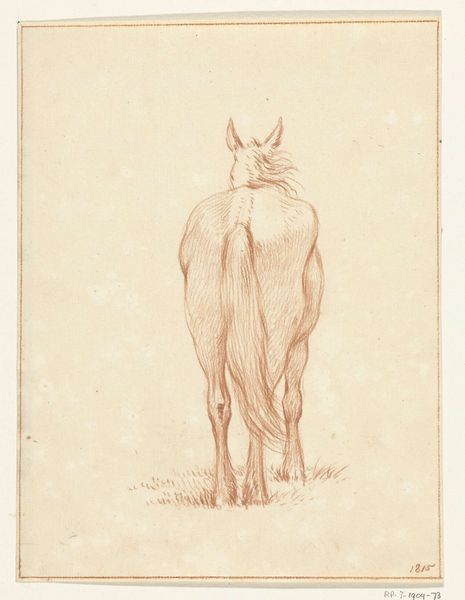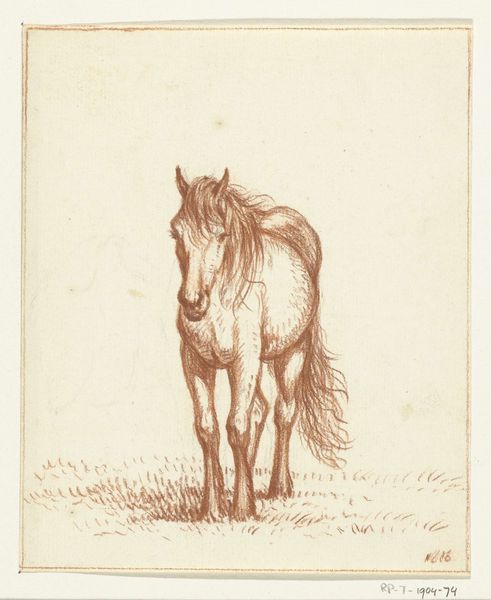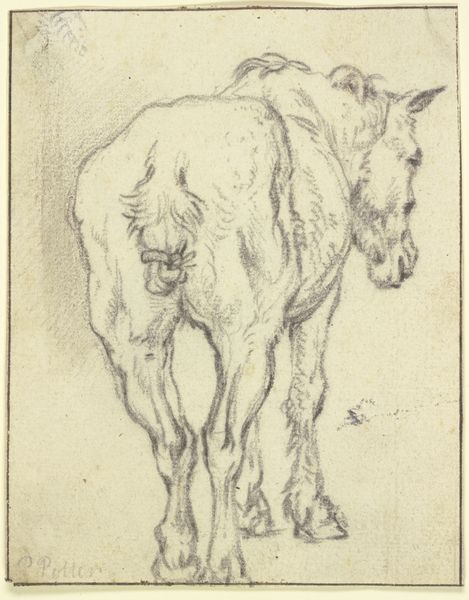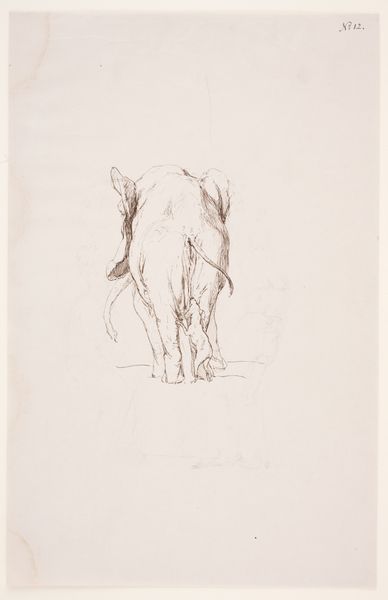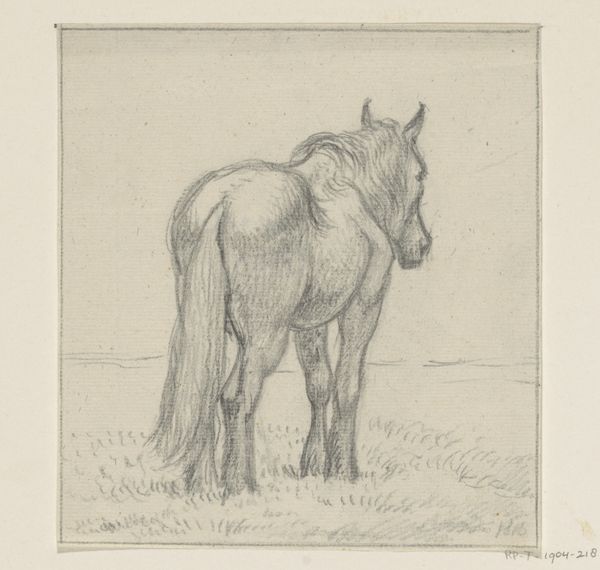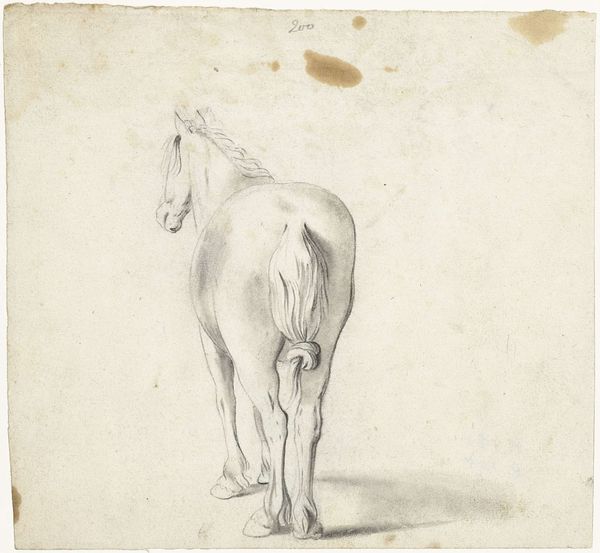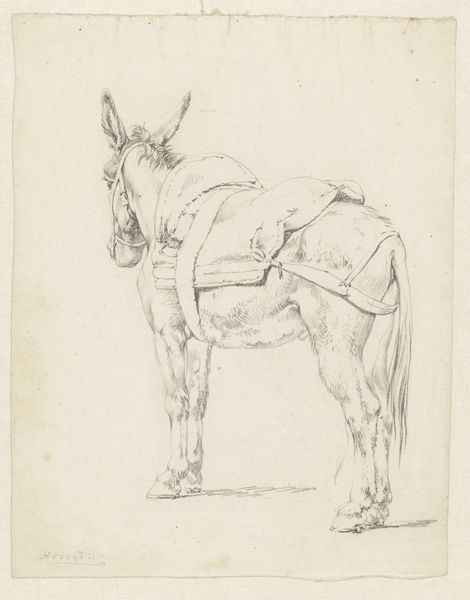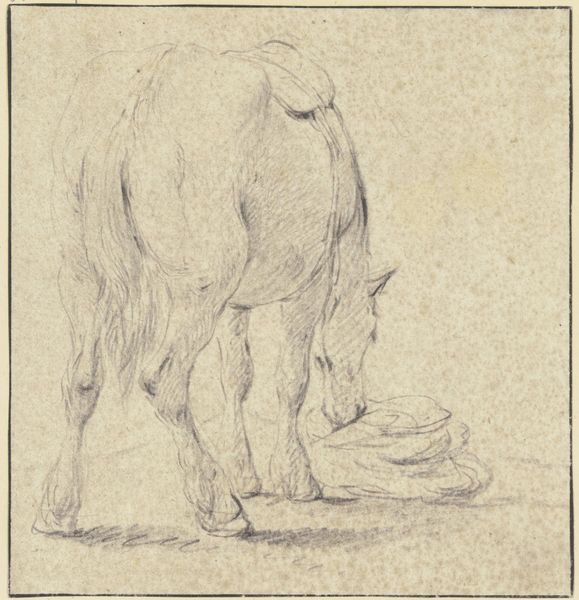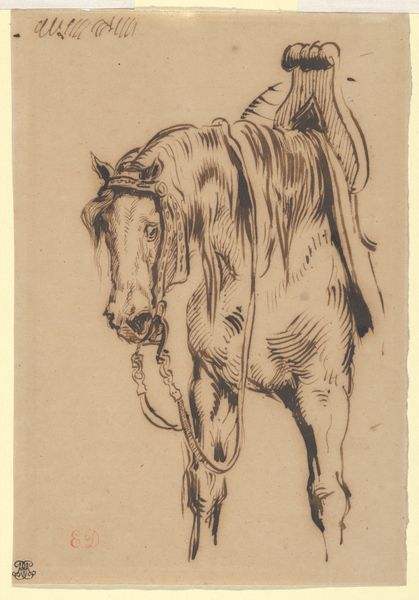
drawing, paper, pencil
#
drawing
#
pencil sketch
#
figuration
#
paper
#
pencil drawing
#
romanticism
#
pencil
#
horse
Dimensions: height 178 mm, width 144 mm
Copyright: Rijks Museum: Open Domain
Curator: Here we have Jean Bernard's "Standing Horse, from Behind," a pencil drawing on paper, created around 1815, and housed right here at the Rijksmuseum. What are your first thoughts? Editor: It’s surprisingly… intimate. Presenting the horse from this perspective creates a vulnerable, almost humorous effect. It seems to capture a moment of peaceful, yet somewhat awkward stillness. Curator: Indeed. Bernard's use of line is quite skillful. Notice how he models the horse's musculature with these delicate pencil strokes, really capturing the play of light and shadow. There's a sensitivity in the rendering of the form, wouldn't you agree? Editor: I do. And I think there’s more to it. Consider the historical context. During this period, horses were essential for agriculture and transportation; their exploitation by the dominant landowners defined socio-economic conditions for many. Showing the animal from this rear perspective—powerless to look—I wonder if Bernard is slyly offering a critique of labor dynamics at that time. Curator: While I appreciate that reading, I tend to focus on the formal elements. The way Bernard uses hatching and cross-hatching to build up volume, the careful attention to proportion... these artistic considerations create depth that transcends immediate contextual analysis. The tail seems centrally composed, does this relate to some philosophy on animal power? Editor: Perhaps. Or maybe it’s commenting on the constraints put upon individuals within that societal structure. What might freedom mean in a world with defined labor hierarchies? Remember Romanticism embraced individual liberties; it seems logical to consider its reflection of this through our subject, a farm animal whose fate lay solely at its master's discretion. Curator: I see your point; however, by closely studying his skillful control of the pencil— the almost academic way that he has created mass— perhaps we can infer that through line and form he expresses what other Romantic artists sought in idealized portraits of historical figures. It is certainly very interesting to consider. Editor: It truly is. Thank you for highlighting the artistic aspects in Bernard's "Standing Horse" which are now something that I can use to springboard my appreciation for the artistic rendering and larger themes being considered through such careful visual presentation. Curator: And I appreciate you reminding me of the wider context of that same representation, giving rise to new perspectives on this artist’s view of natural, societal and economic history.
Comments
No comments
Be the first to comment and join the conversation on the ultimate creative platform.
